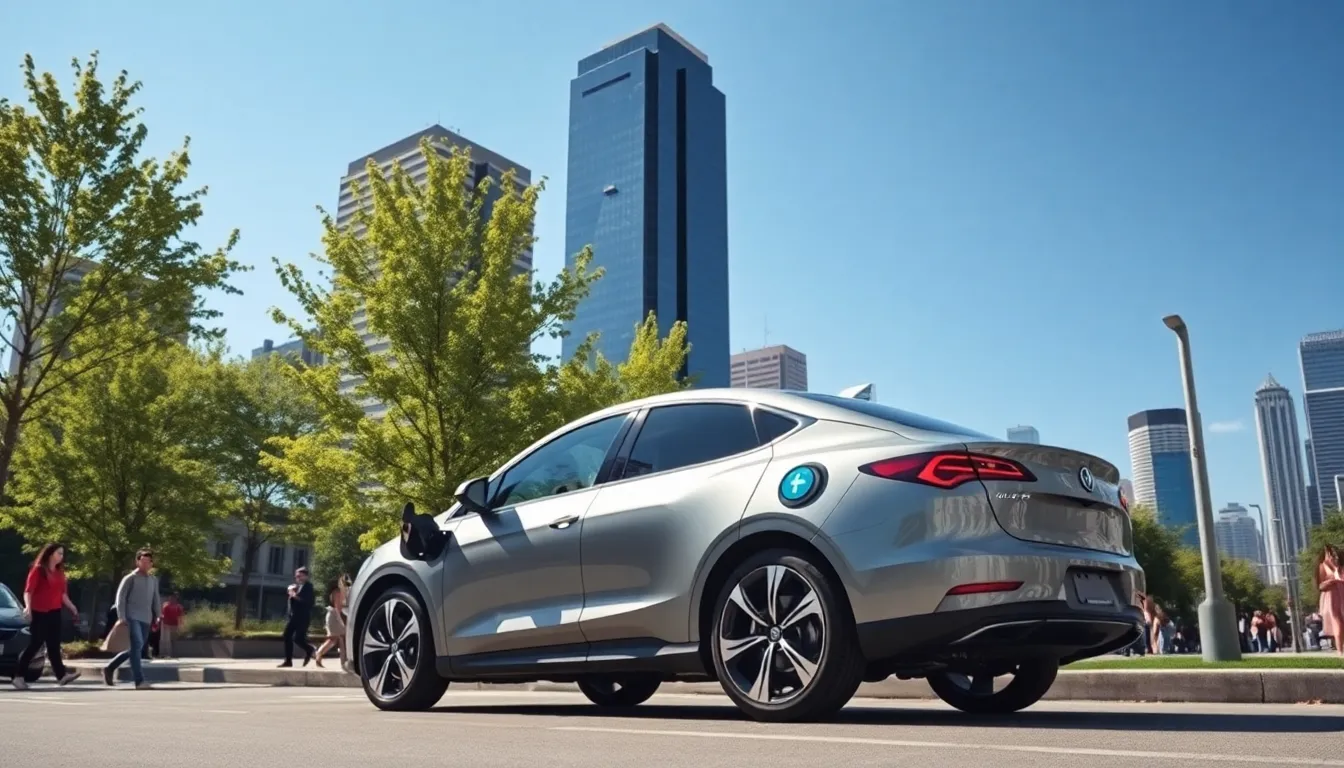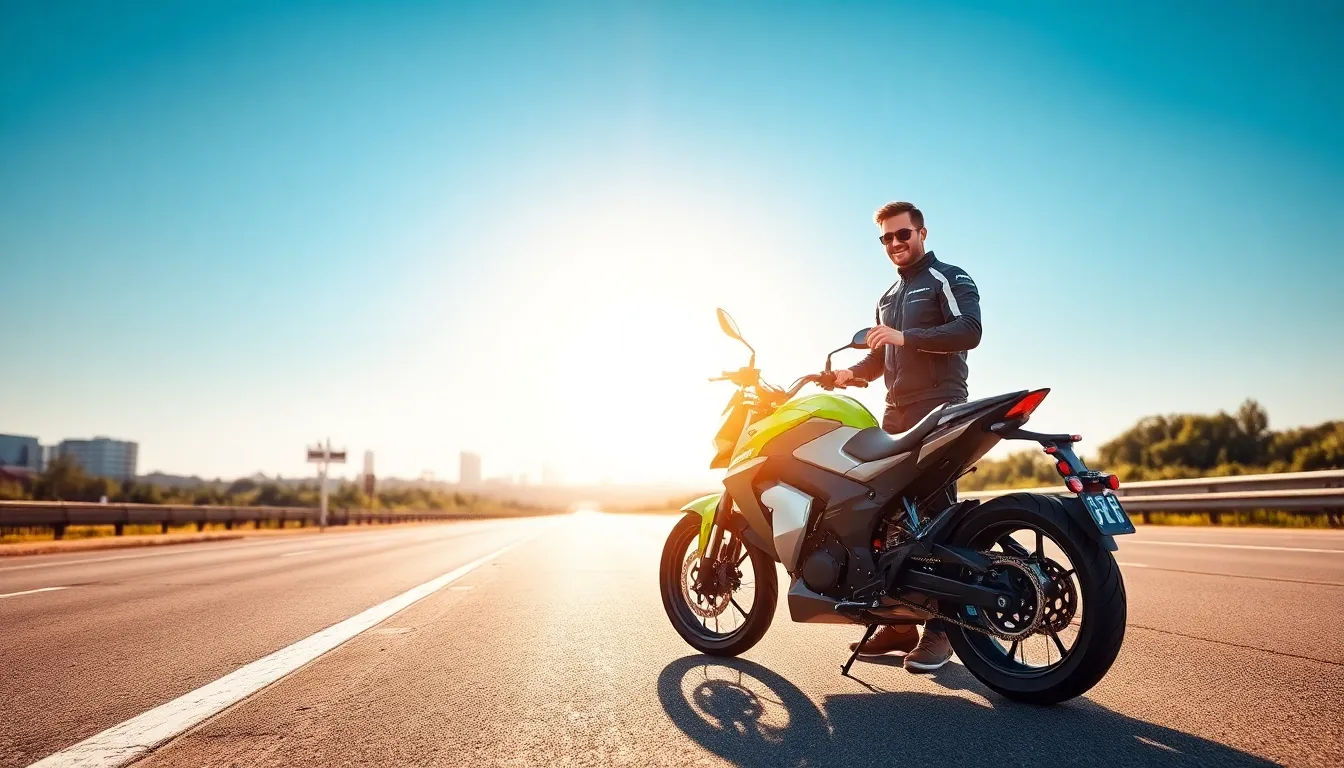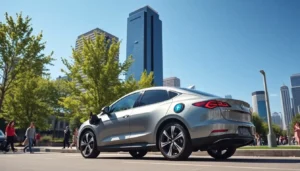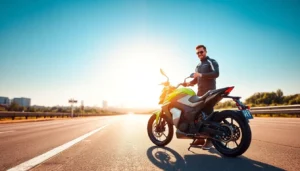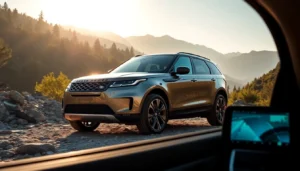Imagine cruising down the highway, wind in your hair, and the sweet sound of silence surrounding you. Yes, we’re talking about moto electric vehicles. These eco-friendly rides are more than just a trend: they’re revolutionizing the way we think about transportation. So, if you’re tired of gas stations and pollution, let’s jump into the electrifying world of moto electric vehicles.
Table of Contents
ToggleIntroduction to Moto Electric Vehicles

Moto electric vehicles (MEVs) are the new heroes of the road, merging cutting-edge technology with sustainability. But what exactly are these motorized wonders? Simply put, MEVs are two-wheeled machines powered by electric motors instead of traditional gasoline engines. They use rechargeable batteries, making them a greener alternative to conventional motorcycles. This innovative ride isn’t just catching the eyes of enthusiasts: it’s paving the path toward a more sustainable future. With rising gas prices and increasing environmental concerns, the demand for electric vehicles is skyrocketing faster than you can say “charge it up.” They’re not just for environmentally-conscious riders: they attract individuals eager for efficiency and style in their daily commutes.
As cities strive to become more eco-friendly, MEVs provide an efficient means of transportation that mitigates traffic and decreases carbon footprints. Whether it’s zipping through congested streets or taking the scenic route on a weekend ride, the allure of going electric is hard to ignore.
Benefits of Moto Electric Vehicles
The advantages of moto electric vehicles extend well beyond keeping the planet green. To start, lower operating costs can make a significant impact on the wallet over time. Charging at home typically costs a fraction of filling up a gas tank, meaning more cash for essential items like coffee and snacks.
Also, they are often eligible for government incentives and rebates, making the initial purchase less daunting. Tax credits or local government subsidies can sweeten the deal, making that shiny new eco-friendly bike even more appealing.
Another perk is minimal maintenance. Without complex internal combustion engines, electric motorcycles require less servicing. No oil changes, fuel filters, or exhaust systems mean more time enjoying the ride and less time at the shop.
Let’s not forget about noise pollution. MEVs operate almost silently, allowing you to enjoy your ride without the annoying roar of a traditional motorcycle. They also contribute to lower noise levels in urban areas, creating a more pleasant environment for everyone. In fact, some riders love it so much, they say they can finally hear the birds sing on their morning commute.
Types of Moto Electric Vehicles
When venturing into the world of electric motorcycles, one finds an impressive variety to choose from. The market offers options that cater to all kinds of riders, no matter their preferences.
- Electric Motorcycles: These are designed to replicate traditional motorcycle performance but with electric powertrains. Think of them as the sports cars of the moto electric world. Brands like Harley-Davidson and Zero Motorcycles are leading the charge with powerful models that offer speed and agility without the gas guzzling.
- Electric Scooters: Perfect for urban dwellers, electric scooters are lightweight and ideal for short commutes. Brands like Bird and Lime have even turned scooters into a shareable option for zipping around the city.
- Dual-Sport Electric Bikes: For the adventure-seekers, dual-sport electric bikes provide versatility, allowing riders to tackle both city streets and rugged trails. With sturdy frames and off-road capabilities, they let riders explore more without compromising on sustainability.
These types cater to various use-cases, whether you want a speedy thrill, a convenient city ride, or an adventurous journey, there’s a moto electric vehicle suited just for you.
Key Features to Consider When Choosing a Moto Electric Vehicle
Selecting the right moto electric vehicle requires careful consideration of several key features.
- Battery Life: The heart of electric vehicles lies in their batteries. A longer battery life means less time tethered to charging stations and more freedom to explore. Look for vehicles with a range that matches your typical riding distance.
- Charging Time: Equally important is how long it takes to recharge. Rapid charging options can significantly reduce downtime, making it easier to fit charging into your daily routine.
- Weight and Size: The weight of a motorcycle can dramatically affect performance and maneuverability. A lighter bike may be easier to handle, especially for urban riding.
- Safety Features: Some MEVs come equipped with advanced safety features like anti-lock braking systems and traction control. For inexperienced riders, this can add an extra layer of reassurance on the road.
With these considerations in mind, potential buyers can make informed decisions that align with their riding needs and preferences.
The Role of Technology in Moto Electric Vehicles
Technology is the driving force behind the evolution of moto electric vehicles. Cutting-edge advancements are transforming how these machines operate, providing additional benefits to riders.
- Smart Connectivity: Many new models feature smartphone integration, allowing users to monitor battery life, navigate routes, or even pinpoint their bike’s location if it’s ever misplaced.
- Regenerative Braking: This innovative technology captures energy during braking and feeds it back into the battery, enhancing overall efficiency. In short, the harder you brake, the more juice you get back.
- AI and Performance Optimization: Algorithms help adjust engine performance based on riding conditions, ensuring optimal efficiency whether you’re cruising at high speeds or coasting along a gravel path.
- Battery Technology Improvements: Advances in battery technology are making electric motorcycles more powerful and longer-lasting. Innovations in solid-state batteries could potentially lead to even lighter and more powerful setups in the future.
Challenges Facing the Adoption of Moto Electric Vehicles
Even though their numerous benefits, the widespread adoption of moto electric vehicles isn’t without hurdles. One major challenge is the lack of charging infrastructure. Riders often need to plan their routes carefully, depending on the availability of charging stations, which can be limited in some areas.
Range anxiety is another concern. For some, the fear of running out of battery before finding a charging spot can be daunting. This psychological barrier can deter potential buyers, even if the actual range meets their needs.
Also, upfront costs can be a sticking point. Though the operating costs stabilize in the long run, the initial investment in some models may deter budget-conscious consumers. As the market expands, it can be hoped that prices will gradually decrease, making electric motorcycles accessible to a broader audience.
The Future of Moto Electric Vehicles
The future of moto electric vehicles shines brightly on the horizon. With advancements in technology and a growing commitment to sustainability, the industry is poised for rapid growth. Expected improvements in battery technology promise longer ranges, faster charging capabilities, and more efficient energy management systems.
Manufacturers are likely to invest heavily in refining existing models and developing new ones tailored to niche markets, such as urban commuting or long-distance touring. More investment in charging infrastructure will help the transition and help alleviate range anxiety for riders.
As more riders embrace electric options, public perception will shift, and eco-friendly motorcycles will become standard rather than the exception. This shift not only benefits the planet but fosters a new community of passionate riders dedicated to combining the thrill of motorcycle culture with sustainability.



